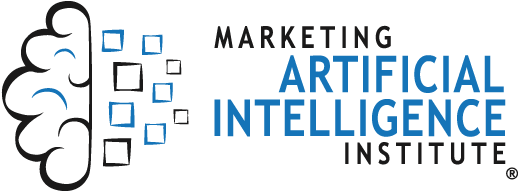Artificial intelligence (AI) has the potential to transform the way we approach PR and marketing communications.
That's because AI excels at automating repetitive tasks and enabling intelligent capabilities that give PR and communications pros superpowers.
What is AI in PR / communications and why should you care?
AI is an umbrella term for technologies that enable machines to perform cognitive tasks-like seeing, writing, moving, reading, or analyzing data-as well or better than humans.
AI technologies can be trained on tasks by humans or, in the case of machine learning, learn to improve on their own.
You use AI every day, even if you don't know it.
Your phone's voice assistant uses AI technologies like natural language processing (NLP) and natural language generation (NLG) to answer your questions.
Gmail uses AI to predict what you'll type next and complete sentences for you.
And Amazon relies on AI to recommend products for you based on what you've bought in the past.
These are just a few examples of how AI impacts your daily consumer life. But, if your work involves PR and/or marketing communications, AI could dramatically impact your professional life, too.
That's because AI offers brands an unprecedented ability to increase revenue and reduce costs through more intelligent automation and machine-powered predictions.
McKinsey predicts AI will create up to $2.6 trillion in business value in marketing and sales alone.
At Marketing AI Institute, we've spent years researching and applying AI in marketing and PR/communications.
In that time, we've identified a handful of transformative ways artificial intelligence could change how PR professionals and PR practitioners do their work in the next five years.
How AI in PR and corporate communications could change everything
AI in PR is capable of performing all of the use cases below right now, but that doesn't necessarily mean that you can buy the technologies today to do every one of them.
Since artificial intelligence is built to complete narrow tasks, someone has to envision a use case, and then invest in applying AI to PR skills to make them smarter (i.e. AI-powered).
So, think of this list as more of a, "what technology companies could/should build to make public relations more efficient and effective." It's designed to serve as a useful forward-looking guide for PR professionals and professional communicators.
- Produce press releases and media reports with natural language generation (NLG).
- Perform advanced sentiment analysis on media clippings and social posts/comments.
- Identify and extract names, places, businesses, events, data, and brands from any document, video or audio file.
- Convert speech-to-text . Ideal for press conferences, media interviews, podcast episodes, conference presentations, and internal strategy meetings
- Turn any text (e.g. press releases, reports, scripts) into lifelike speech that complements written and visual content, and gives your audiences an alternate way to consume information.
- Translate any audio or text files into multiple languages for wider distribution.
- Build a knowledge assistant/chatbot for your brand's newsroom that is designed to cater to media questions and searches.
- Use AI recommendations to surface relevant news and shape brand perception for consumers in real-time as they visit your site.
- Identify the right influencer who's most likely to reach, engage, and motivate your audiences.
- Target media outlets and contacts with the greatest probability of generating coverage, rather than traditional manual list building based on categories and keyword searches.
- Create custom story angles for journalists based on interests, past coverage, personalities, and trends.
- Support your media pitches with predictive data about the popularity/demand for stories.
- Manage your reputation online by predicting the occurrence and impact of negative reviews.
- Analyze and capitalize on the PR and communications strategies of your competitors.
- Monitor print, broadcast and online channels to predict potential issues for your brand.
- Identify brand logos and products in photos and videos using image recognition.
- Tag and label images and videos to enable more searchable branded content.
- Flag inappropriate consumer-generated content on your site or social media channels.
- Use image recognition and facial recognition to integrate smart, interactive elements into event promotions and social media campaigns.
- Monitor for deepfake videos of your company's executives and spokesperson that could negatively impact them and/or your brand.
Make no mistake...
The list above should give PR professionals pause.
It's not a stretch to imagine AI automating or augmenting the majority of tasks PR pros and communications experts do in the next three to five years.
Which means you need to understand AI tools, AI technology, and AI use cases to thrive in the PR industry moving forward.
Here are a few AI tools for PR that we're keeping an eye on.
AI tools for PR and corporate communications
AI tools for PR and corporate communications exist that can do everything from write communications for you to doing social listening at scale.
- Beautiful.ai uses AI to automatically design presentations. As you build a deck, it adapts slides and layouts to follow best design practices.
- Grammarly uses AI to offer suggestions to improve any type of written communication. It'll flag typos, recommend language choices, and improve your style and tone.
- HyperWrite is sophisticated AI that actually writes entire sentences and paragraphs for you.
- Talkwalker is an AI-powered listening tool that tells you how consumers are perceiving your brand in real-time.
These are just a few of the many tools out there today that can impact how you do your work in PR and corporate communications.
Artificial intelligence (AI) has the potential to transform the way we approach PR and marketing communications.
